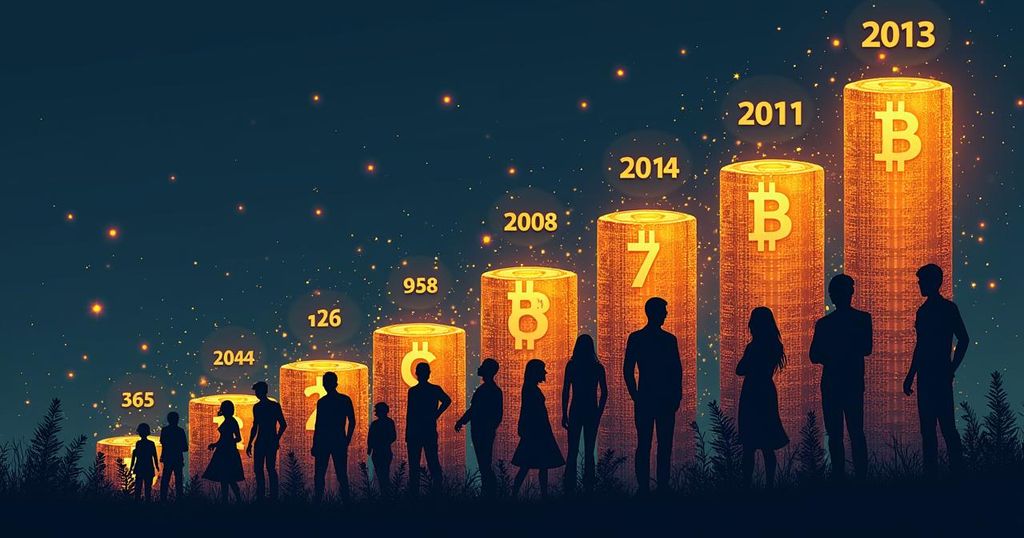Bitcoin Market Overview: 2013-2024
From 2013 to 2024, Bitcoin’s market capitalization surged dramatically, peaking at over one trillion USD in April 2021 before declining to approximately 600 billion USD by June 2021. Despite significant growth in market value, consumer awareness remains limited, with only a fraction of the American population familiar with Bitcoin, and inadequate infrastructure such as Bitcoin ATMs hindering broader access. Bitcoin’s decentralized nature and substantial price increase further distinguish it from traditional currencies.
The Bitcoin market has undergone significant transformations from 2013 to 2024, with a remarkable rise and subsequent fluctuations in its market capitalization. In April 2021, Bitcoin achieved an unprecedented milestone, with its market capitalization exceeding one trillion USD—a substantial increase attributed to its growing popularity since 2017. However, by June 2021, the market cap had diminished to approximately 600 billion USD. Market capitalization, which is calculated by multiplying the total circulating supply of Bitcoins by their price, illustrates the asset’s volatility. Furthermore, while the market cap surged, public awareness lagged; in 2019, approximately 25 percent of Americans remained unfamiliar with Bitcoin. Despite over 18 million Bitcoins in circulation, there are merely 6,674 Bitcoin ATMs globally, predominantly situated within the United States, indicating limited physical accessibility to Bitcoin for everyday consumers. Unlike traditional currencies, Bitcoin operates on a decentralized network, devoid of control by any single institution or bank. This independence, combined with the ease of account setup and complete transaction transparency, distinguishes Bitcoin from conventional financial systems. The Bitcoin price index, reflecting the average price across major global exchanges, demonstrated a dramatic increase, escalating from 367 USD in January 2016 to a peak of over 13,000 USD by December 2017.
The evolution of Bitcoin and its market dynamics reflect the broader trends in cryptocurrency adoption and consumer awareness. Initially introduced in 2013, Bitcoin garnered attention due to its unique decentralized nature, which offers a stark contrast to traditional monetary systems. The rapid ascent in market value, especially from 2013 to 2017, was fueled by escalating public and investor interest, though the general populace’s understanding of Bitcoin remained insufficient. Current data indicates a growing yet still limited integration of Bitcoin into daily transactions, significantly influenced by the availability of ATMs and direct consumer engagement.
In summary, the Bitcoin market remains a paradox of rapid financial growth juxtaposed with an equally slow cultural integration. From its humble beginning in 2013 to reaching significant market cap milestones, Bitcoin illustrates the complexities of emerging digital assets. While its volatility and decentralized nature contribute to its appeal, the prevailing lack of widespread consumer knowledge and limited physical infrastructure such as ATMs pose challenges for further adoption and integration into everyday financial practices.
Original Source: www.statista.com








Post Comment